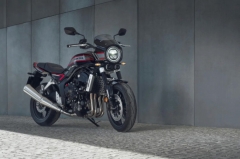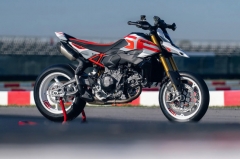Yamaha to accelerate adoption of more sustainable manufacturing practices
The Japanese manufacturer seeks to achieve 92-percent emissions reductions by 2035.

The Yamaha Motor Group Environmental Plan 2050 was unveiled by Yamaha in July 2019. To lessen the total environmental effect of the brand, Iwata produced additional electric and alternative fuel mobility alternatives as part of its multi-pronged strategy. In addition to creating new vehicles, Yamaha aimed to significantly reduce CO2 emissions from its operations by the year 2050.
With ever-increasing emissions laws, Japan and the European Union are reducing their carbon footprints. The implementation of Euro 5 compliance already compelled some motorbike manufacturers to alter or eliminate specific models, and Japan's upcoming revisions to its emissions standards may have a similar impact. Team Blue is now moving those production-based efforts 15 years faster, with a goal of a 92 percent reduction in plant emissions by 2035 (relative to 2010). Yamaha will put in place both energy-saving technologies and clean energy alternatives to attain that lofty goal.

To achieve maximum efficiency, the company's value-based energy strategy will incorporate minimal size and minimal energy equipment. To save as much energy (and emissions) as feasible, domestic (Japanese) and foreign factories will also do away with standby/fixed energy usage and use auto-shutdown protocols.
The bLU cRU will implement renewable energy sources to further offset facility energy consumption. By July 2022, the company's Iwata headquarters will have switched to hydroelectricity with zero carbon emissions. By 2030, Yamaha will also transition other domestic and foreign locations to carbon-free machinery, including solar panels, electric furnaces, and steam-free air conditioners.
Yamaha already works with counterparts in Europe and Japan to develop interchangeable battery technology. However, Team Blue stands out from its competitors and is prepared for a cleaner future thanks to their rapid green plan.
Tagged Under
Related Articles
-
Honda launches E-VO electric motorcycle exclusive to China, for now / News
Honda has pulled the covers off the E-VO, a fully electric futuristic motorcycle in the Chinese market.
-
Maxed out: Yamaha NMax 125 Tech Max takes home Design Win / News
Yamaha has once again brought home a win at the Red Dot Awards, this time for the NMax 125 Tech Max. This makes it the 14th year in a row the brand has earned a design award.
-
Benelli unveils 902S naked streetfighter in China / News
Benelli has unveiled the 902S naked bike in China, hinting at a global launch of the muscular naked bike in the global market soon. Could we get this bike in the Philippines, too?
-
New Yamaha NMAX ‘Turbo’ debuts in Indonesia / News
Yamaha Indonesia has unveiled the NMAX ‘Turbo’ marking the next generation of the popular maxi-scooter.
-
Yamaha is developing advanced anti-dive suspension technology / News
Yamaha is working on an advanced electronic suspension system with anti-dive properties for both track and street use.
Latest News
-
Take a look at the new Honda CB1000F / News
Honda has revealed the production-spec CB1000F, blending retro style with Hornet-based performance and modern tech. Expected to hit UK showrooms in early 2026.
-
Ducati launches all-new Hypermotard V2 with cutting-edge tech / News
The Hypermotard V2 keeps its aggressive stance and signature beak while bringing sharper design and modern electronics.
-
2026 Kawasaki Z650 S gets more aggressive styling and premium tech / News
The 2026 Kawasaki Z650 S adds new styling, updated tech, and the same dependable 649cc engine loved by middleweight riders worldwide.









